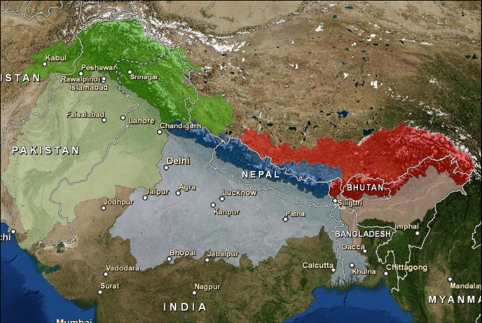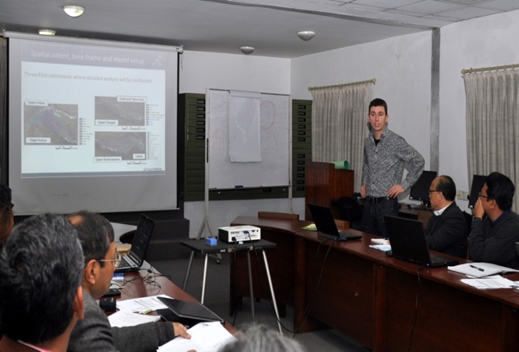Within the framework of the Himalayan Climate Change Adaptation Programme (HICAP) coordinated by the International Centre for Integrated Mountain Development (ICIMOD), FutureWater has started an assessment of future water availability scenarios for the upstream Indus, Brahmaputra and Ganges basins.

The HICAP programme focuses on seven components:
1. Climate change scenarios
2. Water availability and demand scenarios
3. Ecosystem services
4. Food security
5. Vulnerability and adaptation
6. Women in adaptation
7. Communications and outreach
FutureWater is involved in component 2 (water availability and demand scenarios) and develops hydrological models for the mountainous upstream basins to assess water availability up to 2050 including several climate change scenarios based on the IPCC Fifth Assessment Report.
The objectives for this study are to:
• Assess climate change scenarios and develop water availability scenarios corresponding to base and future climate scenarios at sub-basin and catchment scales in the three basins;
• Improve our understanding of the partitioning of runoff contribution from different natural sources (snow, glacier, rainfall and base flow);
• Detailed analysis of uncertainty of water availability scenarios and assessment of hydropower potential for five pilot catchments.

FutureWater closely collaborates with ICIMOD and three international partners representing the countries in the downstream basins (IWMI Pakistan, IIT Delhi, IWM Bangladesh), who will do the climate change impact assessment for the downstream parts of the three river basins. The start-up meeting for component 2 (Water availability and demand scenarios) took place on 8 February 2012 at ICIMOD in Kathmandu.
The HICAP Programme is supported by the Ministry of Foreign Affairs (MFA), Norway.
